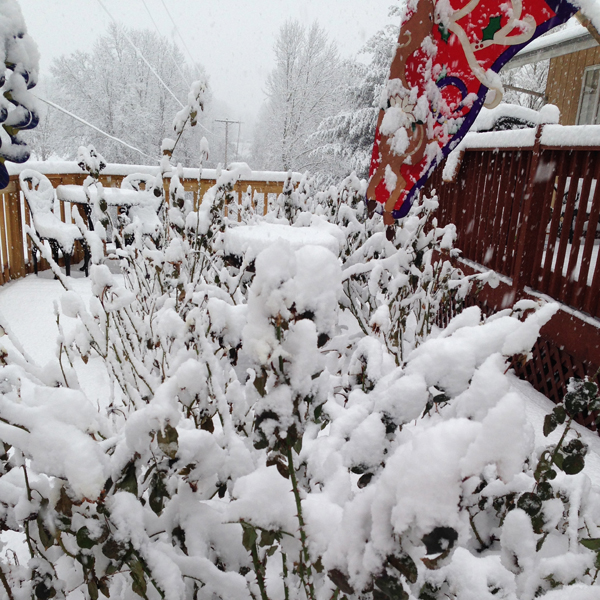
Winter in Minnesota is a force to be reckoned with. Rose Specialist of the Munsinger & Clemens Gardens St. Cloud, Minnesota, Ms. Deb Kaiser, has found a kinder gentler way to wrap it up. The following is a Guest Post by Deb Kaiser reposted by popular request. Deb talks about winter protection for roses in just about every zone, from cold hardy roses needing little to no cold weather protection to, Minnesota tipping, the most radical form of protection I know; so grab a cup of herbal tea and start a warm fire in the fire place and choose the best method to protect your roses for winter. Â
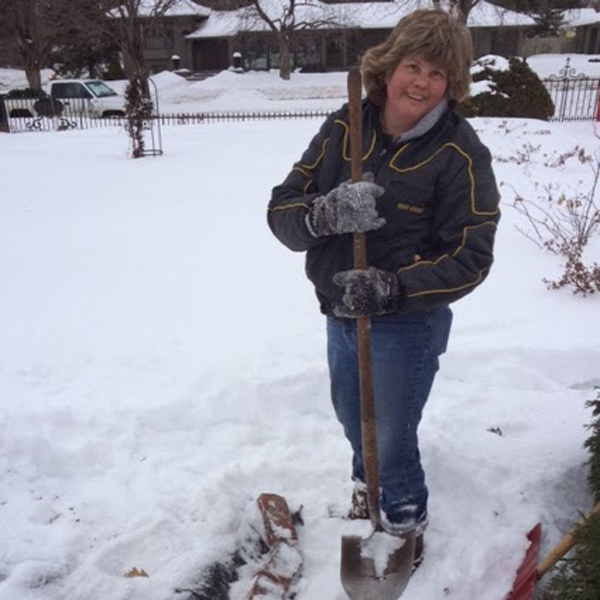
Winter Rose Protection With Construction Blankets
by Deb Kaiser, Rose Specialist
With cooler weather in the forecast I have started to prepare my home rose garden, and the public rose garden that I work for, ready for what might be an early winter. In late August, I stopped fertilizing the roses with nitrogen. I deadheaded the shrub roses one last time. Now, I am letting them form rose hips and harden off for the winter. We have had lots of heavy rain this season. Much of it has been at night and our weather has been cooler, so blackspot has been a problem. I will continue to spray the roses every 2 weeks with a systemic fungicide Honor Guard (a generic for BannerMaxx) and Manzate fungicide both of which I purchase from Amazon

So what can we do to help protect them from early winter temperatures and winds? One of the things that I am starting to do now is to feed the roses potassium, as a drench. I am following the recommendations of Twin Cities Rose Club member, Minnesota Rose Gardener, Jack Falker. Please see Jack’s August & October 2012 blogs on the potassium feast for roses at http://jack-rosarian.blogspot.com.
Good winter protection methods are a must for zone 3 and 4 Minnesota winters. There are three main functions of winter protection – to keep the temperature high enough to prevent winter kill, to keep the temperature low enough to keep the roses dormant, and to protect the roses from drying and withering of canes caused by winter sun and wind. So what roses need winter protection? I winter protect all tender roses that are not hardy to zone 3.
Which roses to protect and the winter protection method to use depend on the degree of hardiness of the variety of rose.

Cold Hardy Varieties
There are many cold hardy varieties of old garden and shrub roses that need no additional cover. They include albas, centifolias, damasks, gallicas, species roses, rugosas, Explorers, Parkland, some Buck Roses, and most Bailey’s Easy Elegance roses. There are varying degrees of hardiness within the cold hardy roses. Tip hardiness is where there is minimal winter dieback out to the tips of the rose canes. My Jens Munk and John Davis shrub roses always come to mind when I talk about tip hardy roses. These two roses require no cover. Their long canes can be seen sticking out of the snow banks. In the spring, they are the first of my shrub roses to leaf out. Crown hardiness is when the rose dies back to the ground. In spring, the plant sends out new shoots at ground level. Addendum: ‘Polar Express Sunbelt’ Winner of Biltmore Rose Trials 2016
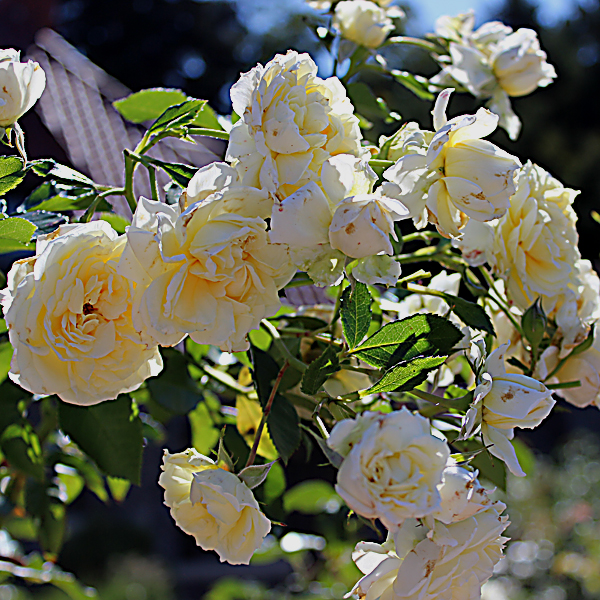
My Bailey’s Easy Elegance roses may do this. There are varying degrees of hardiness in between. With good mulch and snow cover, most of my Easy Elegance and Northern Accents roses die back to somewhere between tip and ground levels.Which roses to protect and the winter protection method to use depend on the degree of hardiness of the variety of rose.
Crown hardy roses need some mulch or other cover such as soil and leaves or marsh hay. Tender roses such as non-hardy (zone 5 and higher shrubs), hybrid teas, grandifloras, floribundas, minifloras, and miniatures need a good winter protection method.
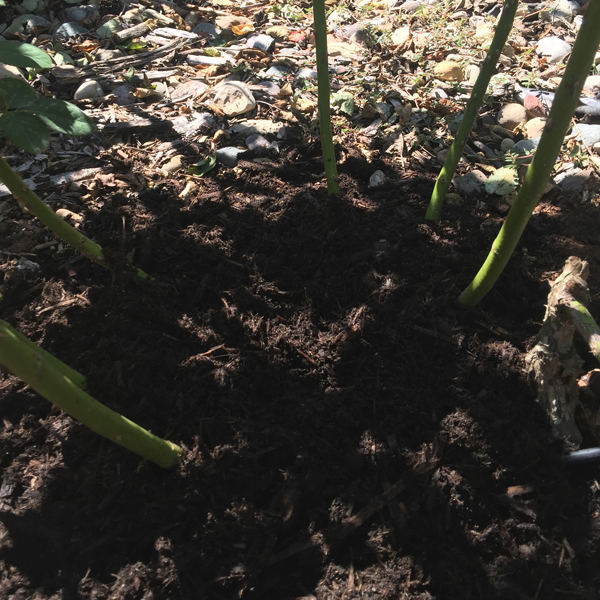
Which roses to protect and the winter protection method to use depend on the degree of hardiness of the variety of rose. to use depend on the degree of hardiness of the variety of rose.
Winter rose protection starts with good summer rose care.
Winter rose protection starts with good summer rose care. Healthy plants survive the winter better — so water, fertilize, and spray for disease during the summer. Discontinue deadheading and using nitrogen fertilizer in late August to allow the roses to harden off for winter. Continue watering the roses into fall. Plant your tender roses in a sheltered location away from drying winds. Plant the bud union on grafted roses 2 to 4 inches below ground level. Choose varieties that are naturally hardy to zone 4 or less.
A winter protection method that is recommended for Minnesota winters, and was used at the Virginia Clemens Rose Garden in St Cloud, is the Minnesota Tip Method. Tender rose varieties are fatally damaged in temperatures below 20 degrees F. Late winter and early spring freeze and thaws can also cause damage. In 1954, Albert Nelson tried a method that he had observed raspberry growers using.
Construction Blanket Method
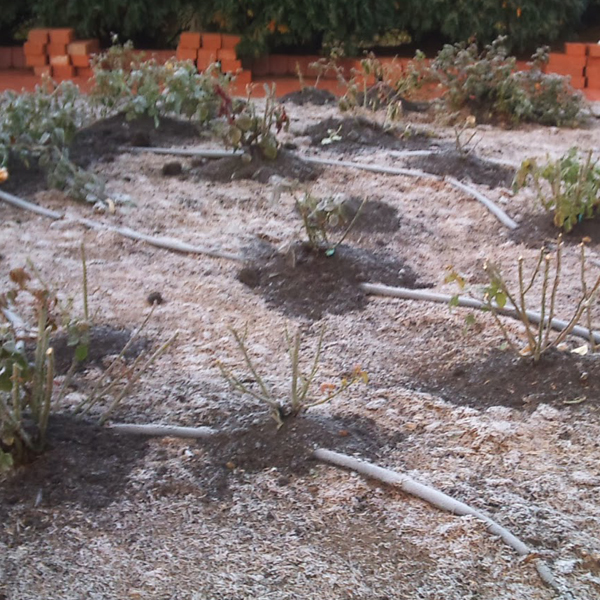
The method of winter rose protection that I have used at home for the past eight years and at work for the past five winters is to cover the rose beds with insulated construction blankets. In mid-October, I cut back the roses to a height of 8 inches.
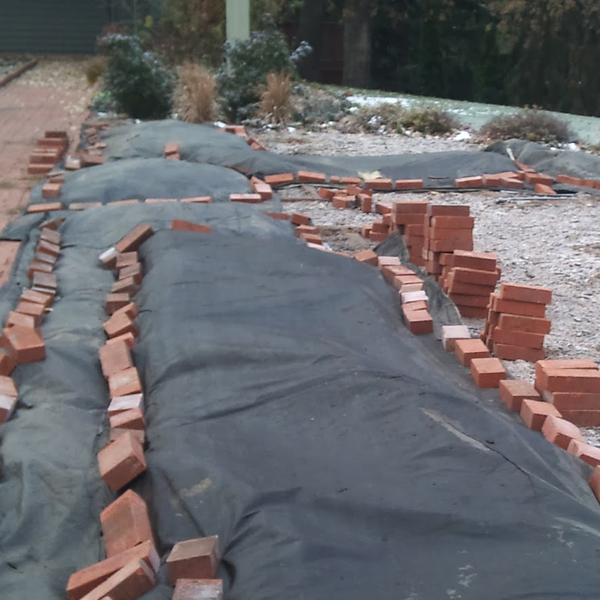
Next, the roses are mulched heavily with several shovel scoops of compost, covering the graft and extending 1-½ feet on each side of the plant. This year I added coffee grounds to my compost. When nighttime temperatures are consistently in the 30 degree F. range, I add rodent bait and cover the entire rose bed with R-value 7.48 insulated construction blankets.

This should be done before temperatures drop below 20 degrees F. Blanket edges and overlaps are bricked down tightly and closely with many bricks. Avoid leaving gaps where air can get in. The blankets look like two tarps sewn together with a thick bat of insulation in the middle.
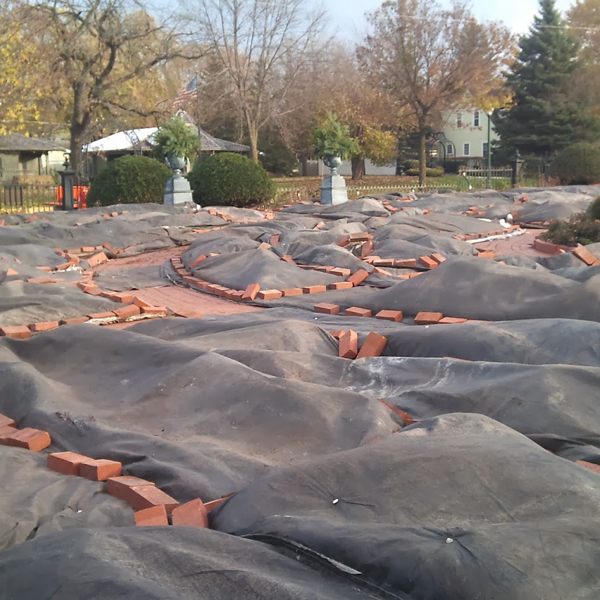
The blankets come in two sizes – 6 foot wide by 25 feet long and 12 feet wide by 25 feet long. The shiny side of the blanket should face down toward the ground.
A method of winter protection that I use for overwintering potted roses is to put them in my attached garage. I spray the plant with fungicide and water it well. Next, I put it in a heavy weight, black garbage bag.
I tie the bag loosely to avoid mildew due to moisture build up. The roses are stored, off the floor and away from drafts in an unheated garage or room with temperatures between 20 and 40 degrees F. In spring, I start removing the rose covering around April 1st. Rose coverings such as leaves, marsh hay, and soil, should be removed in layers as it thaws. About April 15th, I check to see if the soil is thawed enough to raise tipped roses to an upright position without damaging them.
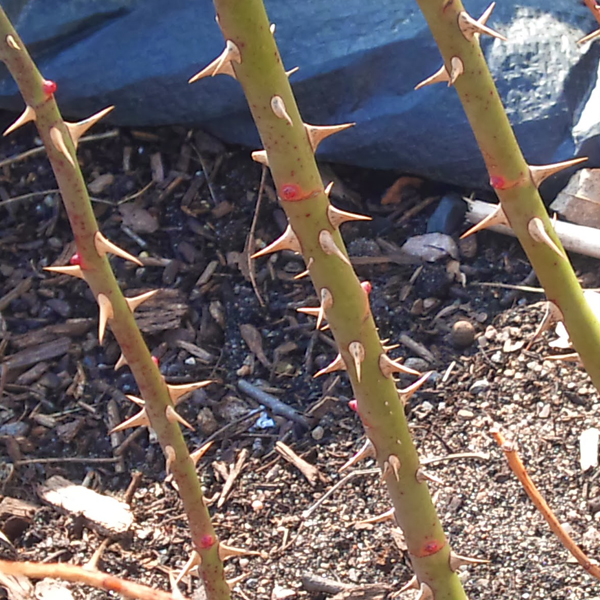
After the roses are tipped up and secured firmly in place, water the canes several times per day to avoid drying out from spring winds. Once buds form, fertilize the roses with a balanced rose fertilizer. Prune the roses after buds form and the plant is actively growing. Spray the roses regularly with a fungicide after leaves form
*This is the Minnesota tip method of protecting garden roses from the University of Minnesota.
“The “Minnesota Tip” is one of several proven methods for protecting roses against early freezes in the fall, the bitter cold of winter and the dangers of thaw-freeze cycles in the spring.
Protecting roses for the winter really begins with the work done during the summer. Bringing the roses into the fall season in the best of health is the first step in winter protection. Soon after the middle of October, preparation can begin for tipping the roses. Follow these steps when using the “Minnesota Tip” method for protecting roses during winter and early spring.
 Figure A
Figure A
 Figure B
Figure B
 Figure C
Figure C
- Water generously one or two days prior to tipping to keep the soil in a moist, workable condition.
- The day before tipping, give the plants a good dormant spray such as a liquid lime-sulphur material.
- Tie the rosebush canes together to allow easier handling.
- Avoid pruning the bushes. Open wounds on the canes may not heal properly, as cold weather can inhibit the formation of a protective callus.
- Dig a trench, starting away from and working toward the base of the bush. The trench should be as long as the bush is high. The width and depth should easily accommodate the bush or bushes. Pull the soil away from the shank (i.e., the root stock area between the bud union and the main branching of the root system) to facilitate tipping the rose. A spading fork is helpful for loosening the soil around the roots.
- When the trench is ready and the roots of the bush are loosened, use a spading fork to push the bush into the trench (Figures A and B). Use the spading fork to hold the bush down while covering it with 2 or 3 inches of soil. If the soil removed in digging the trenches is not enough, add soil from the annual garden or elsewhere (Figure C).
- Cover the soil with about 18″ of loose leaves or other covering such as marsh hay.
Minnesota Tip Method. Starts In Late October
He tipped his roses and covered them with soil. This method of winter rose protection later became known as the It was first demonstrated at an ARS Convention in Omaha in 1966.
The Minnesota Tip Method starts in mid to late October before temperatures drop below 20 degrees F. Spray the roses with a dormant spray such as Lime Sulfur or fungicides such as BannerMaxx and Manzate. Clean up the rose beds, removing dropped leaves and mulch, and remove diseased leaves on the plants to avoid overwintering of disease. Do not prune until spring, as pruning encourages new growth. Tie up the rose canes with orange poly twine, leaving a long tail. This makes the roses easier to tip and bury. The orange twine is easier to see when digging up the roses in the spring. Long lanky canes can be trimmed to make tying easier. Use pruning sealer on the cuts. Using a shovel, dig a trench as long as the rose is high, and wide enough to fit the tied rose. More than one tipped rose can be laid in the same trench. Use a spading fork to pull away the soil from the shank of the rose (below the bud union and above the roots) and loosen the soil around the plant. Dig carefully to avoid damaging the plant or its roots. Use the spading fork to push the rose into the trench. REMEMBER – only the roots bend. Pull more soil away from the shank to make it easier for the roots to bend. Hold the rose down while you cover it with 2 to 3 inches of soil. Add soil from other areas of the garden, if needed to cover the rose. Water the rose beds well to prevent winter drying of roots and canes. After the ground has frozen, cover the rose beds with 2 to 3 feet of leaves or marsh hay. Place several tin cans of rodent bait under the covering to prevent damage from chewing animals. Water the covering well to prevent fire and hold the covering in place. Loosely bagged leaves or insulated construction blankets can also be used as a covering.
Another method of winter rose protection is mounding up the base with 9 to 12 inches of soil. Use a wire cylinder to hold the soil in place. Don’t trim the rose unless necessary. Stuff the cylinder with leaves or marsh hay and cover the entire bed with a 2 foot depth of leaves or marsh hay. Water the rose bed well.
Pictures below is a shrub rose protected with leaves and boards.
Note: The American Rose Society does not recommend the use of rose cones for zone 3 and 4 winters